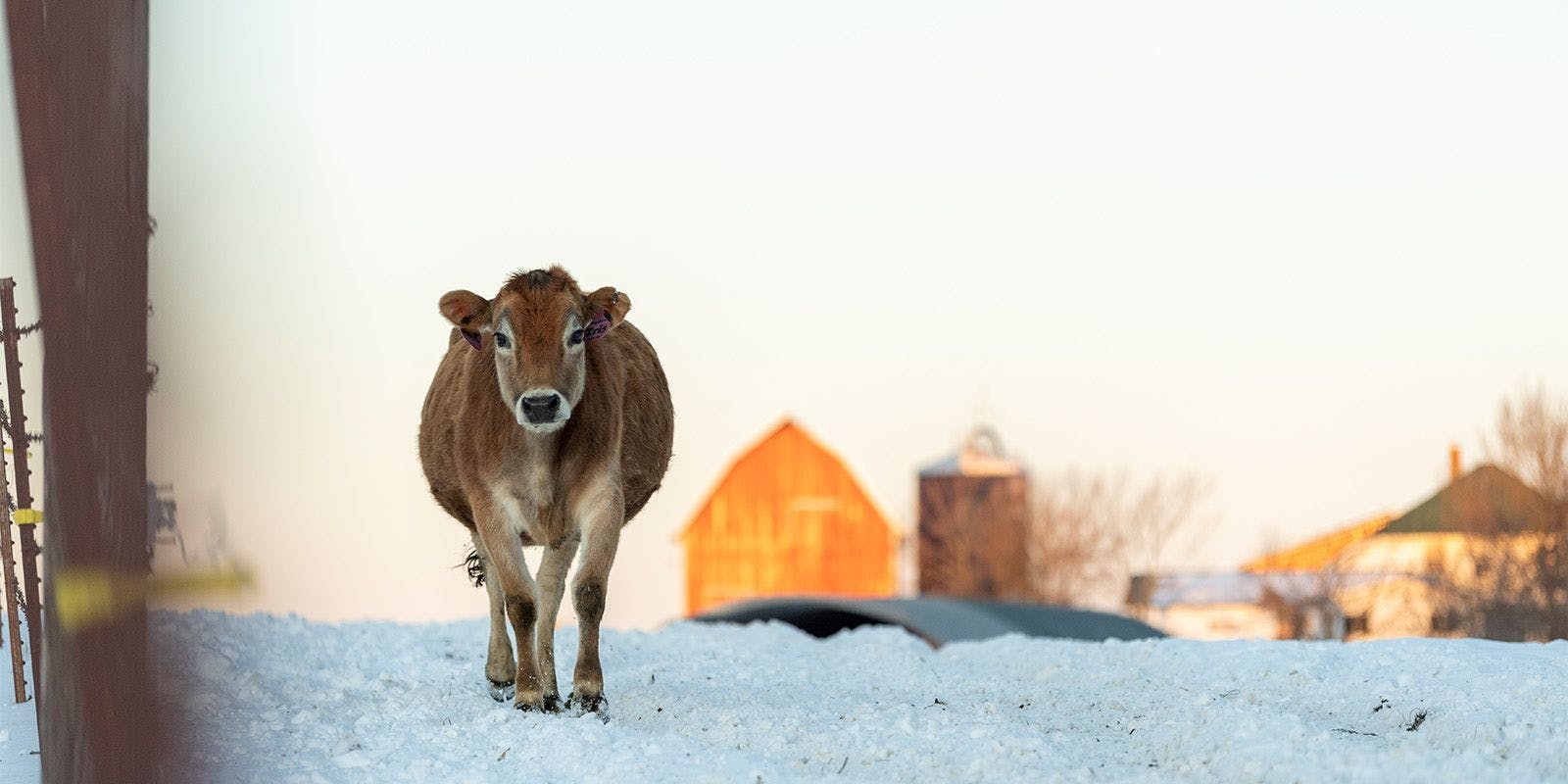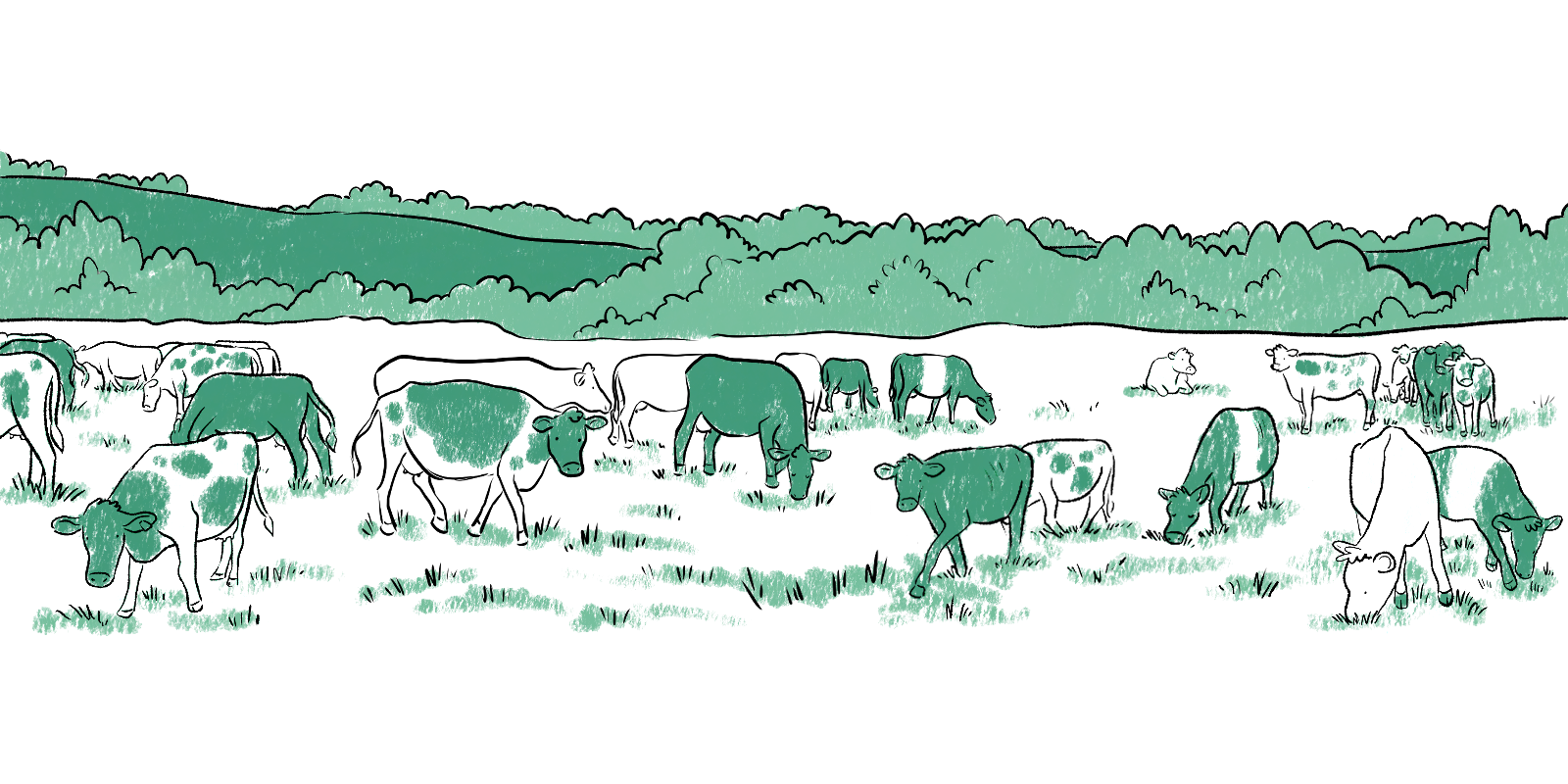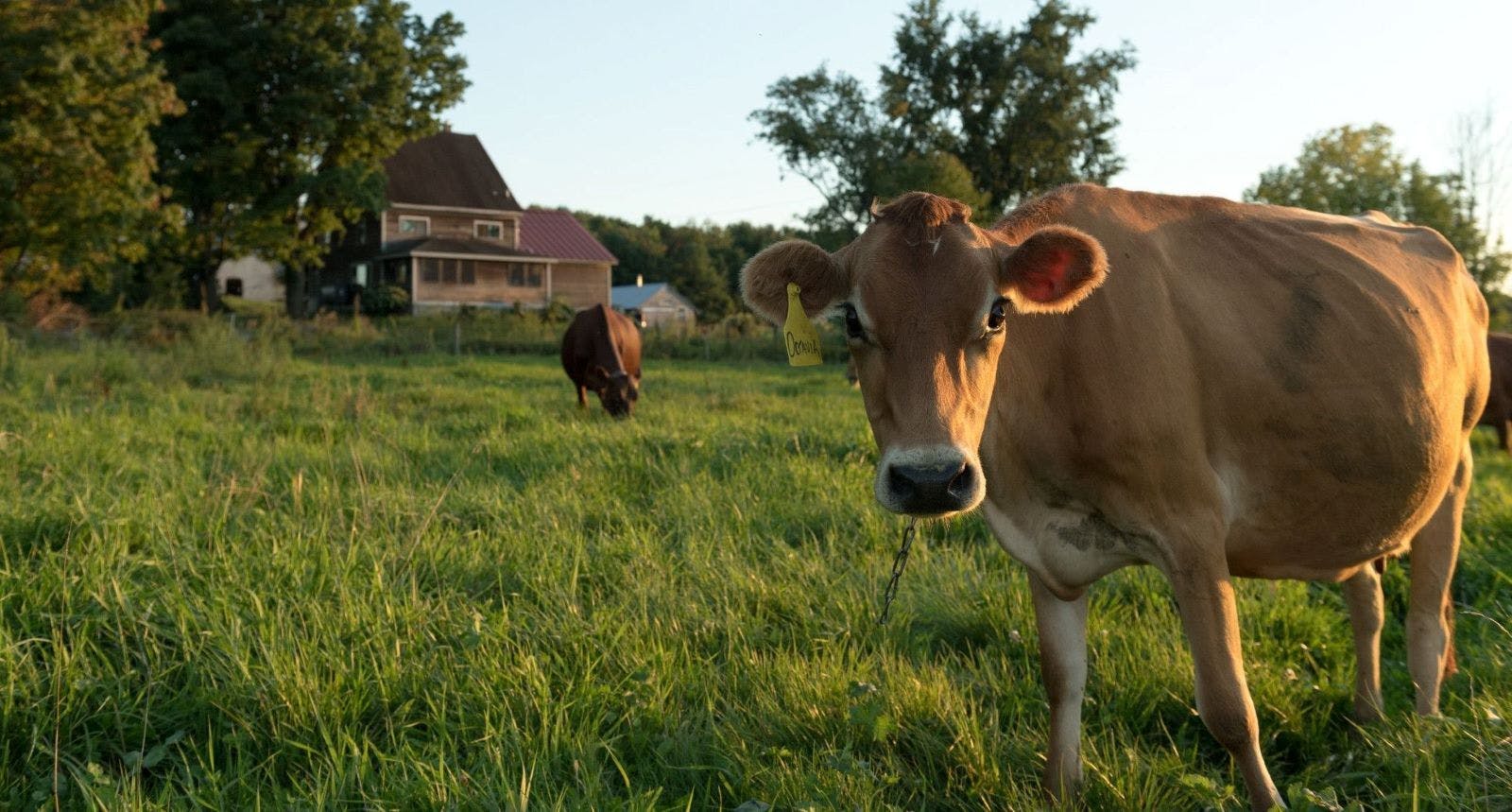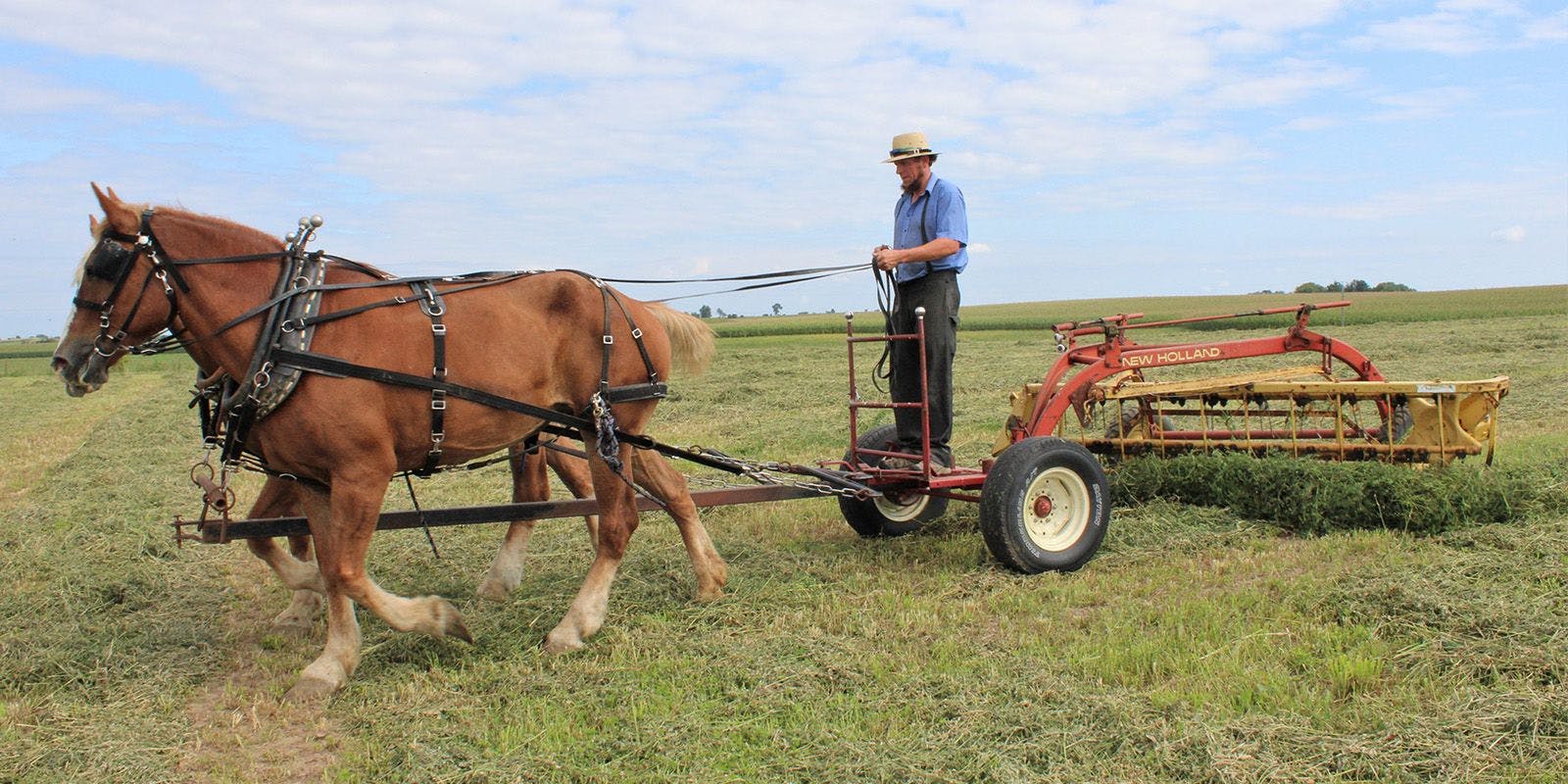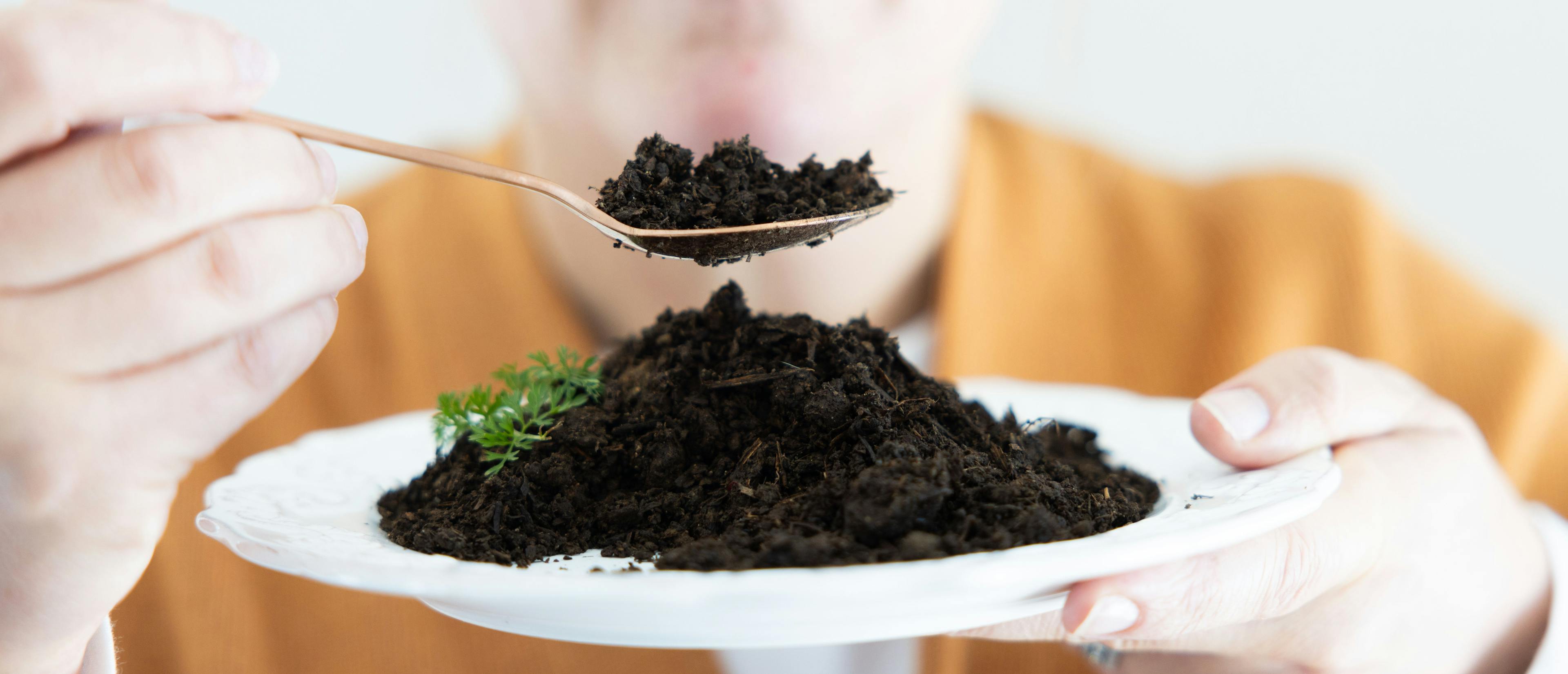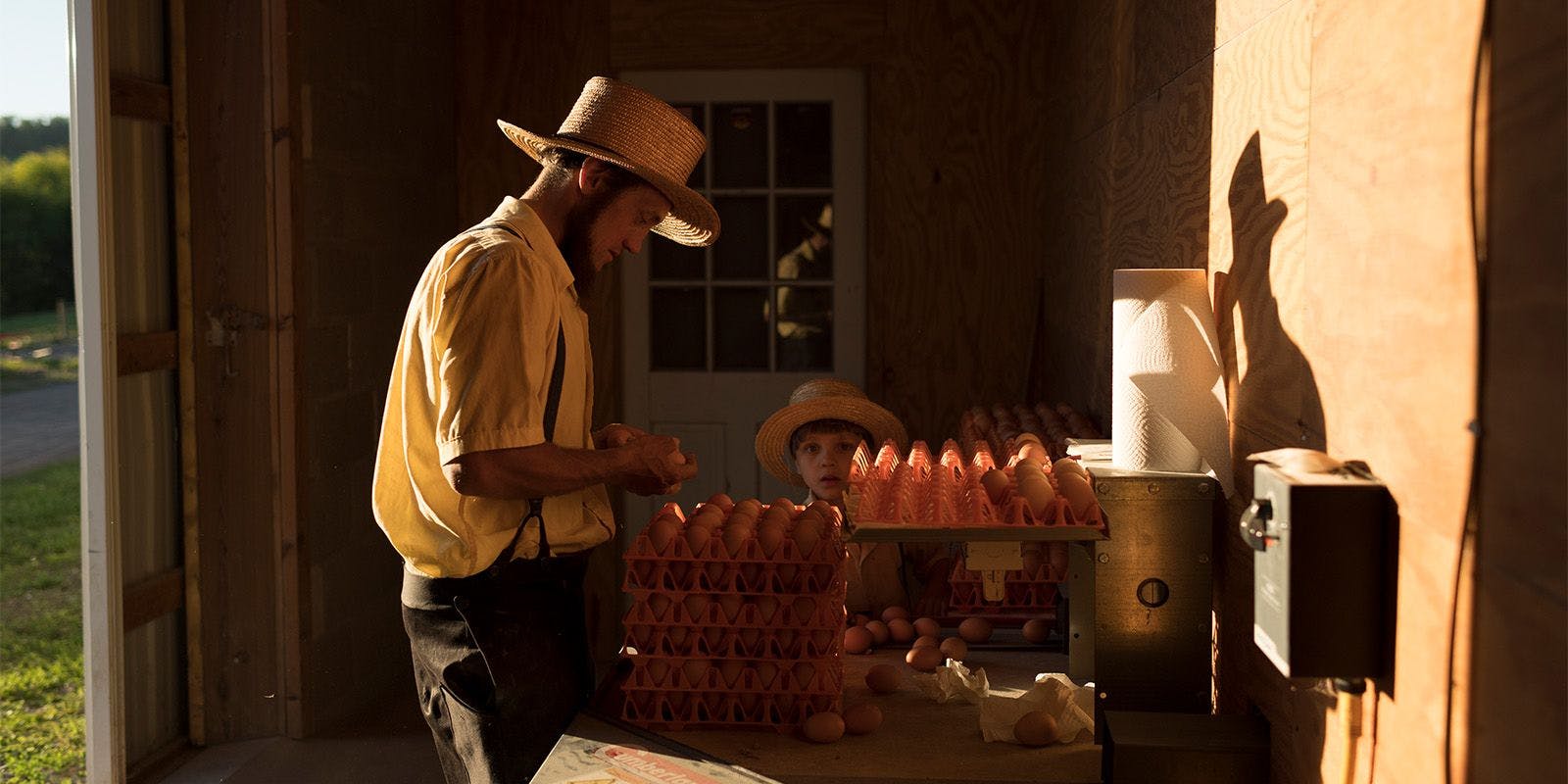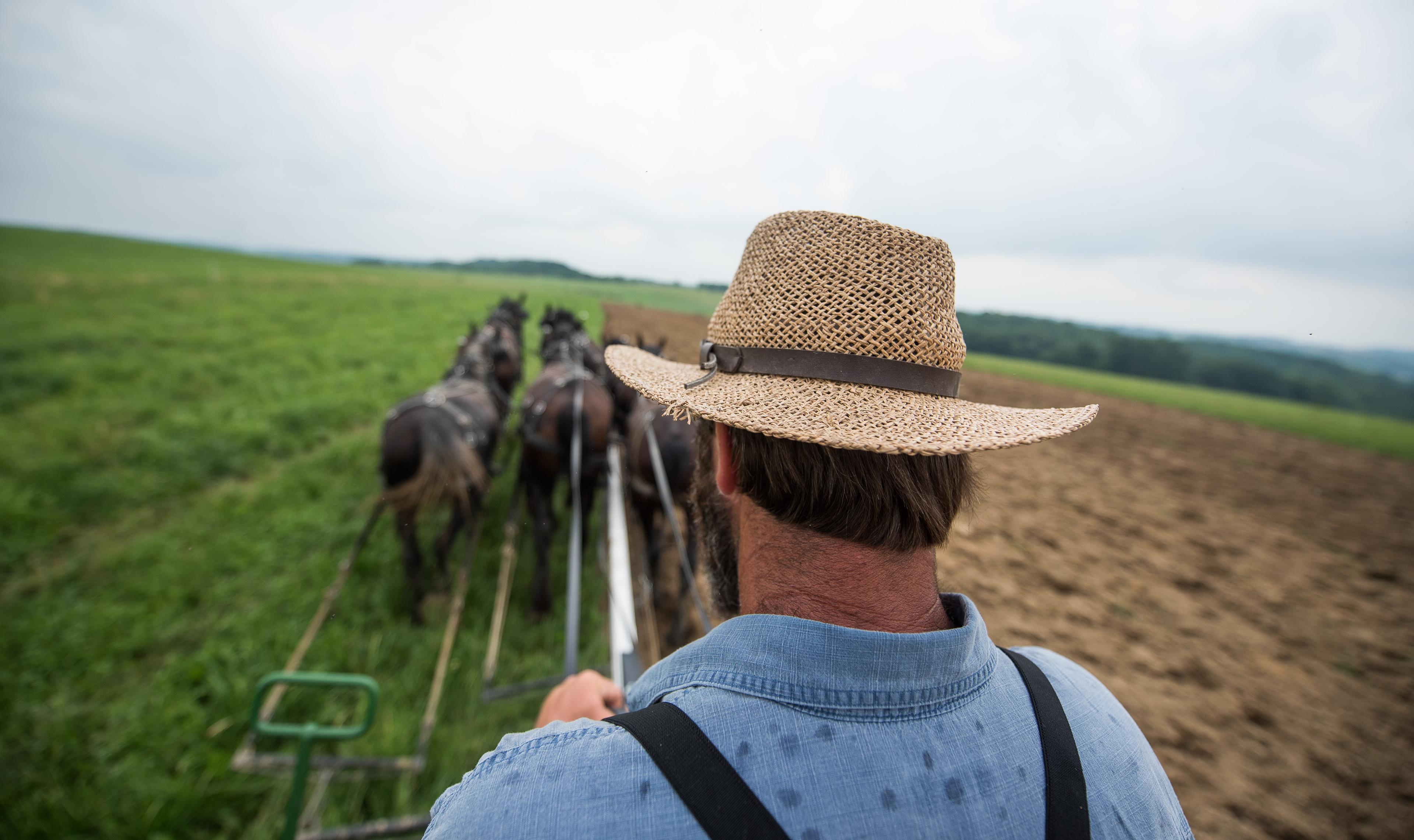
Farming
Organic Farming From the Ground Up — A Look at Spring Planting
Spring planting is like a new calf on fresh pasture, said Robin Brekken. The newness and potential are exhilarating.
“They’re out there kicking, jumping around, excited,” he said.
While he may not be kicking it up in his fields, Brekken looks forward to each growing season with excitement for the fresh start. Spring is the time farmers get back in the fields, cultivate, plant crops and think about their soil health management plans.
Brekken is an Organic Valley farmer. He runs a crop farm in northwest Minnesota. Altogether, Organic Valley farmers operate more than 400,000 acres of organic land across the country.
When Do Farmers Start Planting?
Farmers who plant crops use the winter and early spring to tune up field machinery and plan for the growing season ahead. When the snow melts, ground dries and volatile spring weather evens out, they’re ready to hit the ground running.
Across much of the United States, March, April and May are prime time to get field crops in the ground. Planting can begin when conditions are right.
The soil has to be warm enough. The soil should be about 50 F for corn. Soybeans prefer warmer temperatures, ideally 77 F.
Farmer Patience Is Important
Like those of you eager to start planting your vegetable gardens, you know conditions must be right.
Fields also have to have adequate soil moisture. They can’t be too dry or too wet. Brekken lives in Minnesota’s flood-prone Red River Valley. His heavy clay soil has taught him it’s better to wait for it to dry out than to try and be the first in the field to plant crops.
“It can grow great crops, but you need to be patient,” Brekken said.
In addition, the weather has to be favorable. The possibility of a hard freeze needs to pass. And farmers certainly cannot plant on a day with heavy rain.
“Here, if we get an inch of rain, we go fishing for a couple days,” Brekken said. That gives fields enough time to dry out.
These factors come together to allow freshly planted seeds to germinate and get their growing off to a strong start.
Check out the below video to hear an Organic Valley farmer in Iowa talk about patience and his relationship with the weather and the land.
What Do Farmers Plant in Spring
Farmers choose what to plant based on their region and what is likely to grow well on their farm. Here are some common feed crops farmers in the Midwest plant in spring:
Corn commonly goes in animal feed, whether as dry corn or chopped and fermented into a feed called silage. Beyond the farm, field corn is processed for human consumption for things like cereal and corn starch.
Soybeans are a source of protein. They can be raised to feed livestock (poultry consumes the most soybeans in the U.S.) and humans.
Grasses and legumes like timothy and alfalfa may be planted in the spring and are often planted in a mix. Organic Valley cows love grazing on grasses and legumes. These grasses and legumes can also be made into hay or fermented animal feed.
Small grains like barley, oats and wheat provide food for animals and people, as well as straw (which is perfect for animal bedding). Brekken also loves to plant oats because they enrich the soil.
In addition to oats, Brekken will be planting corn, food-grade soybeans and black beans this year.
Corn, soybeans and small grains can play a role in raising livestock, but they don’t have to. Organic Valley Grassmilk® cows eat only forages. All our cows are on a mostly grass diet. We believe cows should be outdoors, living as nature intended.
All these crops can be used to feed animals on the farm, be sold to neighbors or shipped to other regions.
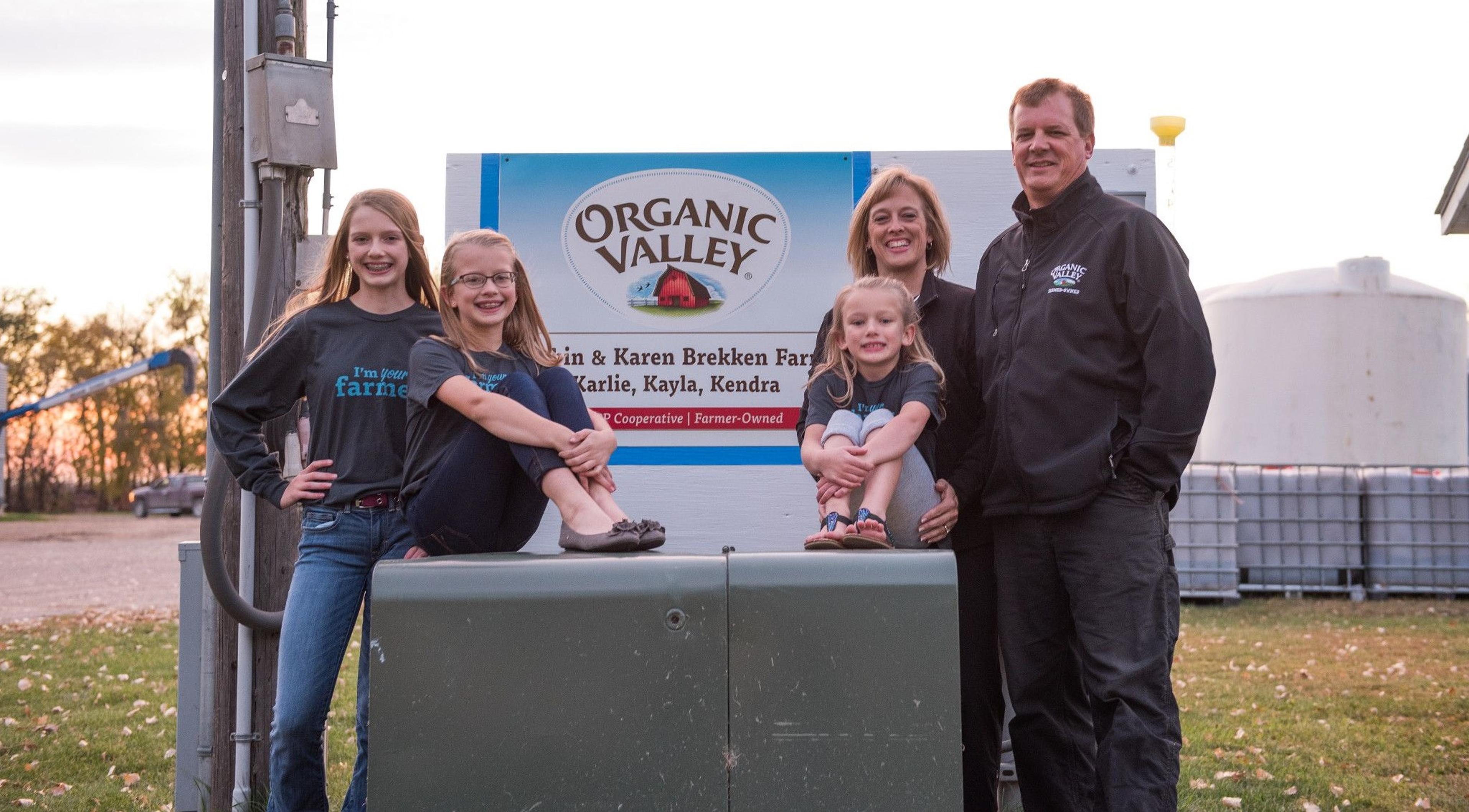
The Brekken family farms organically in Minnesota.
Fieldwork: How Do Farmers Plant Crops?
Most corn and soybeans go into a field that is first plowed and leveled out into a smooth planting bed. Seeds are loaded into a planter that is pulled behind a tractor. The planter allows crops to be planted in rows that are close enough to shade out weeds quickly once they get growing, but far enough apart so they can thrive individually.
The planter has tools on it to help move any crop residue (like stalks, leaves and stubble) from the past aside, dig a row, drop in seeds at a set distance apart, sometimes add natural organic fertilizer alongside the seeds, close the row and firm up the ground for good seed-to-soil contact.
Small grains and grasses can be planted with equipment called a grain drill (typically on a plowed field) or a no-till drill (typically on an unplowed field). A no-till drill is favored for its ability to plant without disturbing the soil.
This greatly decreases the risk for soil erosion. It includes a special tool that can cut through crop residue — leftover stalks, corn cobs and stubble from the previous year’s crops — to create a place for seeds to grow. Beyond that, both are pulled behind a tractor and work similarly, dropping seed by weight (rather than by number of seeds, as a planter would do) and closing and lightly firming the ground.
Not all farmers use tractors, though. About half of Organic Valley farmer-members belong to the Plain community (Amish and Mennonite) and use horses to groom and plant the fields.
Regardless of the method, planting takes a lot of work and most farmers don’t do it alone. Brekken and two employees will pull long days getting this year’s crop in the field. One handles seed and natural fertilizer while the other does most of the planting. Brekken can be found working the ground before or after the planter or on standby to fix anything that breaks down along the way. After several seasons together, they’re a well-oiled machine.
“We go from about 6 a.m. until dark or just after most days,” Brekken said. “We’ll seed around the clock if we have to — if we got started late or if a big storm is coming.”
Altogether, Brekken estimates it will take about two weeks, spread out over time, to get all his fields planted.
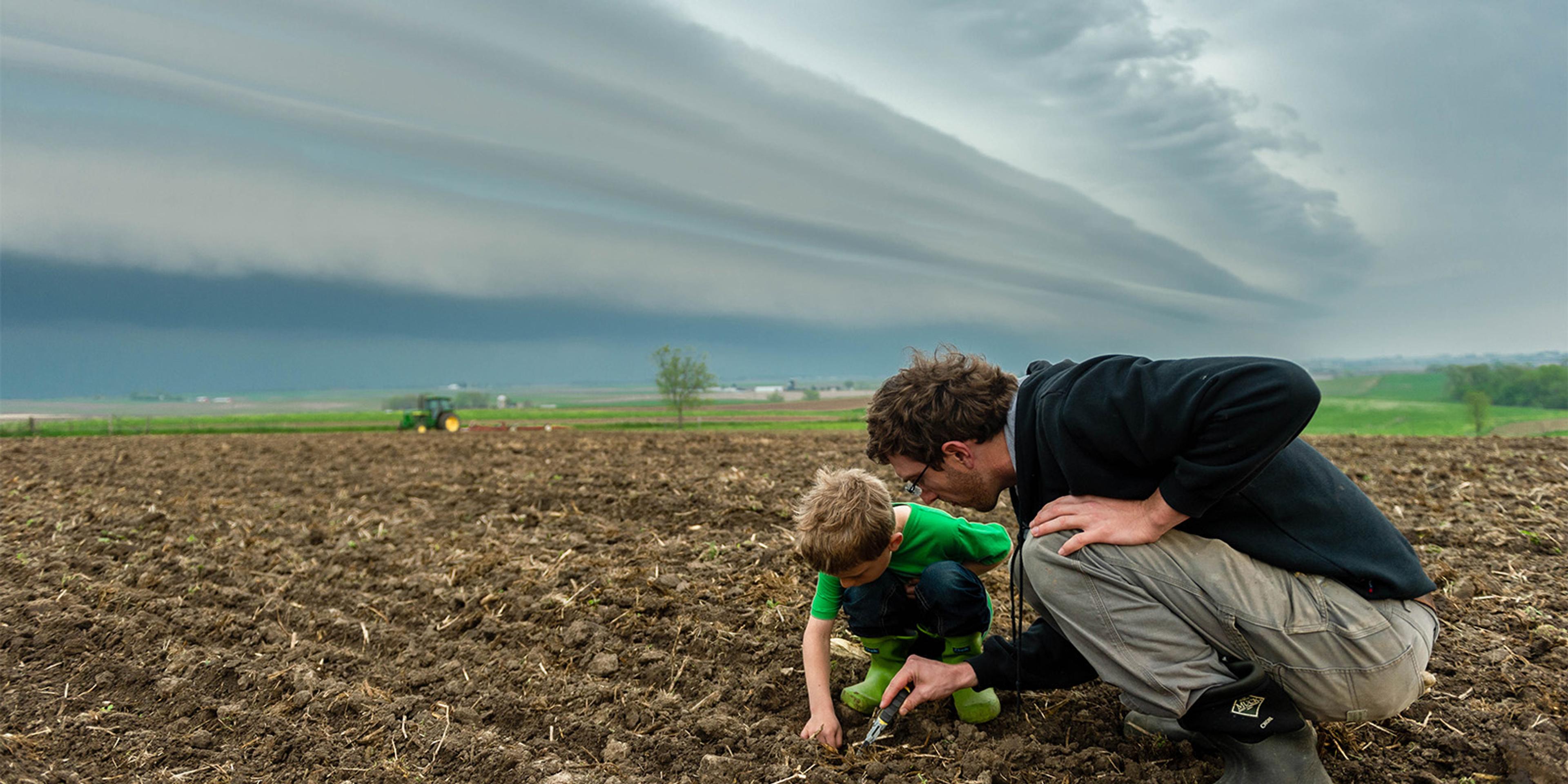
The Tranels check out the soil at their organic farm in Wisconsin.
It’s All About the Soil
Healthy soil makes healthy crops, so Organic Valley farmers are passionate about growing soil health, too.
Soil has nutrients, just like the food it produces. Importantly, plants also give back to the land. Through photosynthesis, they are able to store carbon, nitrogen and other nutrients in the soil as they grow. Crop residue also adds nutrients to the ground as it decomposes. The effect crops have on the soil plays a role in deciding what will be planted where.
Rotating crops every year is one method Brekken uses to promote healthy soil. Crops play off each other’s takings and leavings from the ground year over year.
“Rotation plays a major role,” Brekken said. “I’ve been trying to find just the right one. It’s all about finding what complements each other.”
Organic fertilizers can also add nutrients to the soil. Brekken uses chicken manure pellets to nourish the ground. He’ll also use occasional fish fertilizer and other soil amendments as needed. Many livestock producers use their animals’ manure to fertilize their fields.
Other methods Organic Valley farmers use to increase soil health include planting cover crops (typically a planting in the fall to cover the ground rather than leave exposed dirt over the winter) and rotational grazing. Every Organic Valley farmer-member documents their strategies in a soil health management plan.
Soil-first practices like these lead to positive outcomes. Last year a study found that organic dairy farms average 24% lower greenhouse gas emissions than their conventional counterparts, thanks in part to grazing practices.
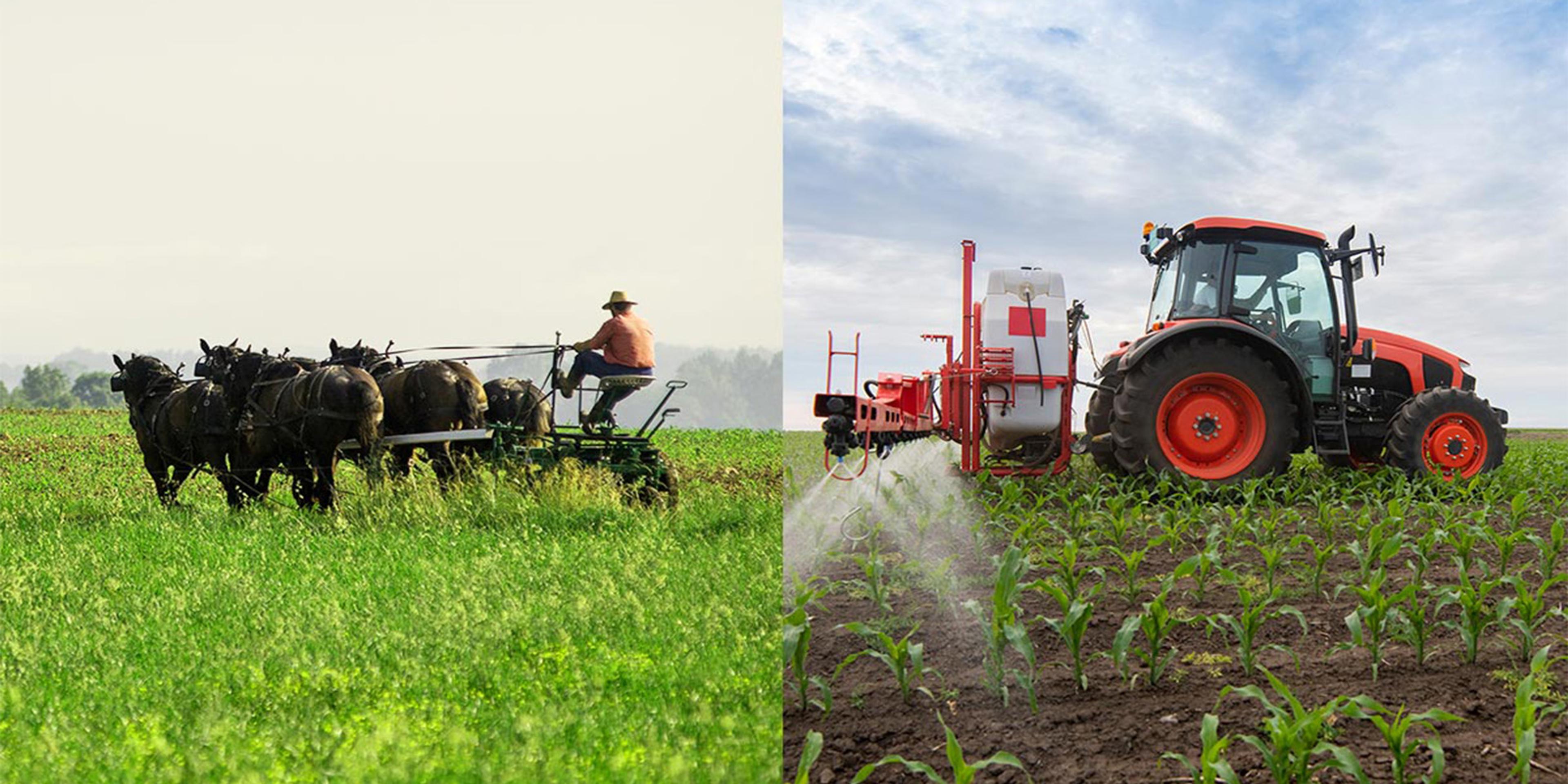
Difference in Planting Conventional and Organic
While seeds need soil, water and sun to grow no matter whether someone is planting organic or conventional crops, there are several important differences.
Tillage has traditionally played a large role in conventional farming. This practice buries crop residue and leaves soil exposed for erosion. Organic farmers are more likely to leave crop residue or plant a cover crop to protect the soil over winter.
Conventional farmers can plant any seed they like, including genetically modified seed. As of 2020, GMOs make up more than 90% of U.S. corn and soybean production. Organic farmers use non-GMO seed every time.
Chemical fertilizers are a hallmark of conventional farming. Since they’re not working with the natural processes inherent to growing crops, conventional farmers use man-made boosters to get their crops to grow well. Organic farmers rely on the biological activity in the ground, working with the soil to raise healthy and bountiful crops.
Organic farmers use mechanical means like cultivating and biological deterrents to keep weeds and pests at bay. Conventional farmers rely on poisonous herbicides and insecticides to do the job. Brekken likes to look to his soil to control both.
Rest assured that all Organic Valley products are always made without antibiotics, synthetic hormones, toxic pesticides or GMOs.
Science shows that organic farms have 30% more biodiversity.
Getting in the Ground
It’s a big job to plan and plant the fields every year. With healthy soil and thoughtful practices in mind, Organic Valley farmers are doing it right while supporting the earth, their animals and others. Brekken considers this work a privilege.
“I look at every growing season as a birth, a life and a death,” Brekken said. “It’s a blessing to get the crops in the ground, take care of them and to harvest.”
Lisa Mennenga is the daughter of Organic Valley dairy farmers from southeastern Minnesota. She lives in St. Paul with her husband and two sons and works in marketing at the University of Minnesota. Mennenga enjoys writing, card games, trying recipes and spending time with loved ones.
Related Articles
- Tags:
- farm life














